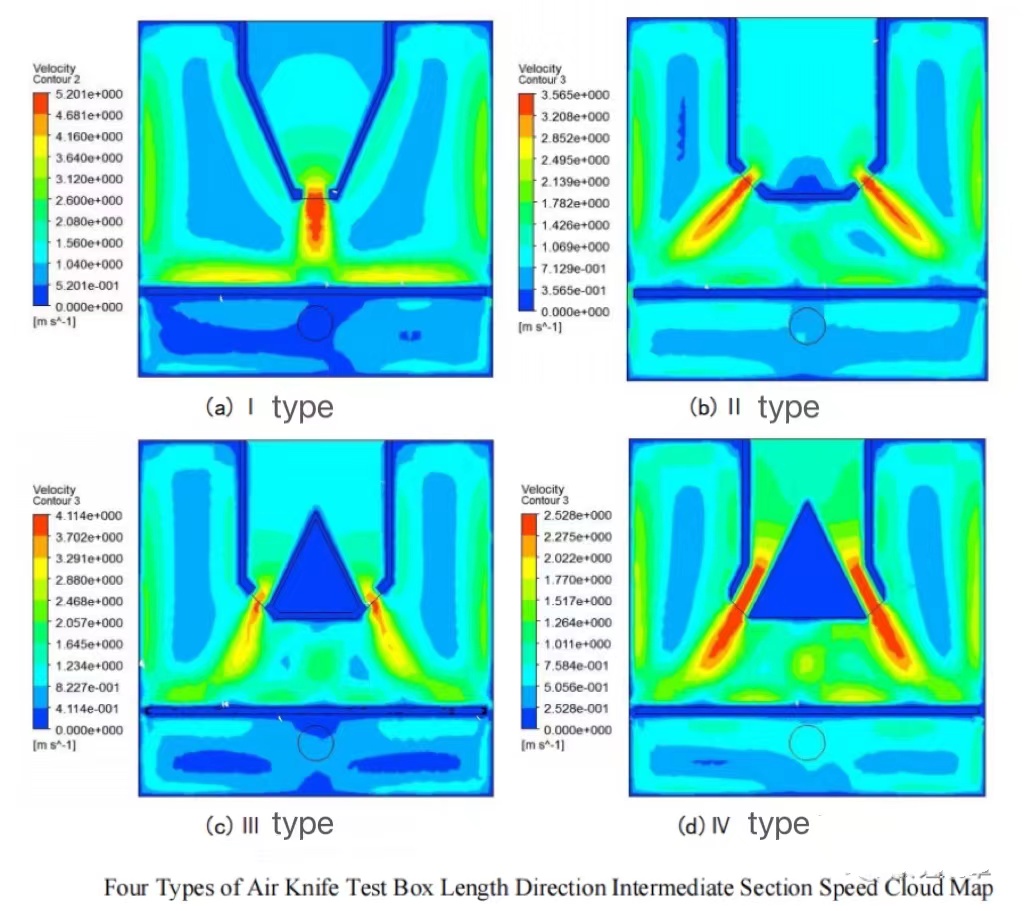 English
English Español
Español  Português
Português  русский
русский  Français
Français  日本語
日本語  Deutsch
Deutsch  tiếng Việt
tiếng Việt  Italiano
Italiano  Nederlands
Nederlands  ภาษาไทย
ภาษาไทย  Polski
Polski  한국어
한국어  Svenska
Svenska  magyar
magyar  Malay
Malay  বাংলা ভাষার
বাংলা ভাষার  Dansk
Dansk  Suomi
Suomi  हिन्दी
हिन्दी  Pilipino
Pilipino  Türkçe
Türkçe  Gaeilge
Gaeilge  العربية
العربية  Indonesia
Indonesia  Norsk
Norsk  تمل
تمل  český
český  ελληνικά
ελληνικά  український
український  Javanese
Javanese  فارسی
فارسی  தமிழ்
தமிழ்  తెలుగు
తెలుగు  नेपाली
नेपाली  Burmese
Burmese  български
български  ລາວ
ລາວ  Latine
Latine  Қазақша
Қазақша  Euskal
Euskal  Azərbaycan
Azərbaycan  Slovenský jazyk
Slovenský jazyk  Македонски
Македонски  Lietuvos
Lietuvos  Eesti Keel
Eesti Keel  Română
Română  Slovenski
Slovenski
Comparative analysis of the velocity field near the tuyere
2023-03-23
Comparative analysis of the velocity field near the tuyere

It can be seen from the above figure that at the air inlets of various types of air knives, the air flow flows into the air knives at a speed of 3m/s, through the equalizing effect of the perforated mesh plate, or the distribution effect of the distribution plate, and finally blows through the air nozzle to the air knife. inside the test box. In various types of air knives, the high-speed areas of hot air are densely distributed in the air knife slits and beyond, and the level and density of the values depend on the number of air nozzles and the structure of the air knife.
In contrast:
Since the I-type air knife has only one air nozzle, the hot air velocity value is the largest at the position of the air nozzle slit, and there are many high-speed areas, most of which are distributed outside the air nozzle;
The position other than the two air nozzles of the type II air knife presents a symmetrical and slender high-speed area, the hot air velocity is large, and the high-speed air is more concentrated;
In the outer areas of the two air nozzles of the type III air knife, the value of the hot air velocity is the lowest, and the high-speed hot air area is the least, and the distribution is not concentrated;
At the two nozzles of the type IV air knife, the high-speed hot air is densely distributed in the slit of the air nozzle and outside the air nozzle, and the distribution area is the widest and most concentrated. The hot air velocity at the nozzle of type and type II air knives.

In the type I air knife test box, the high-speed wave crest area on the surface of the pole piece is the widest, and the fluctuation is the most gentle, the low-speed wave trough area is the least, and the uniformity is the best;
The velocity fluctuations on the surface of the pole piece in the type II and III air knife test chambers are in the shape of undulating peaks, and the wavelet peaks and wavelet valleys are disorderly distributed and relatively rugged. The velocity fluctuations on the pole piece surface are disordered and the uniformity is the worst;
The surface velocity distribution of the pole piece in the IV-type air knife test box is distributed along the ridge line in the length direction, with good continuity, smooth fluctuation, front and rear symmetry, good consistency, and the value in the low-speed trough area is significantly improved, and the uniformity is second only. in Figure a).
By comparing the numerical calculation and simulation results of the four types of air knife structures, we can get:
(1) Type IV air knife test box has the best distribution of hot air flow traces and covers the most surface area of the pole piece.
(2) The high-speed area at the type IV air knife nozzle is the widest, the consistency of the internal and external speed is the best, and the impact performance is the best.
(3) The surface velocity uniformity of the pole piece in the type IV air knife test box is inferior to that of the type I air knife, but the type I air knife has only one air nozzle, and the air output is relatively limited. Due to the superior characteristics of the air knife, the type IV air knife is selected as the final execution element, which will fully reflect the drying effect of the pole pieces in the drying box.
-
E-mail

